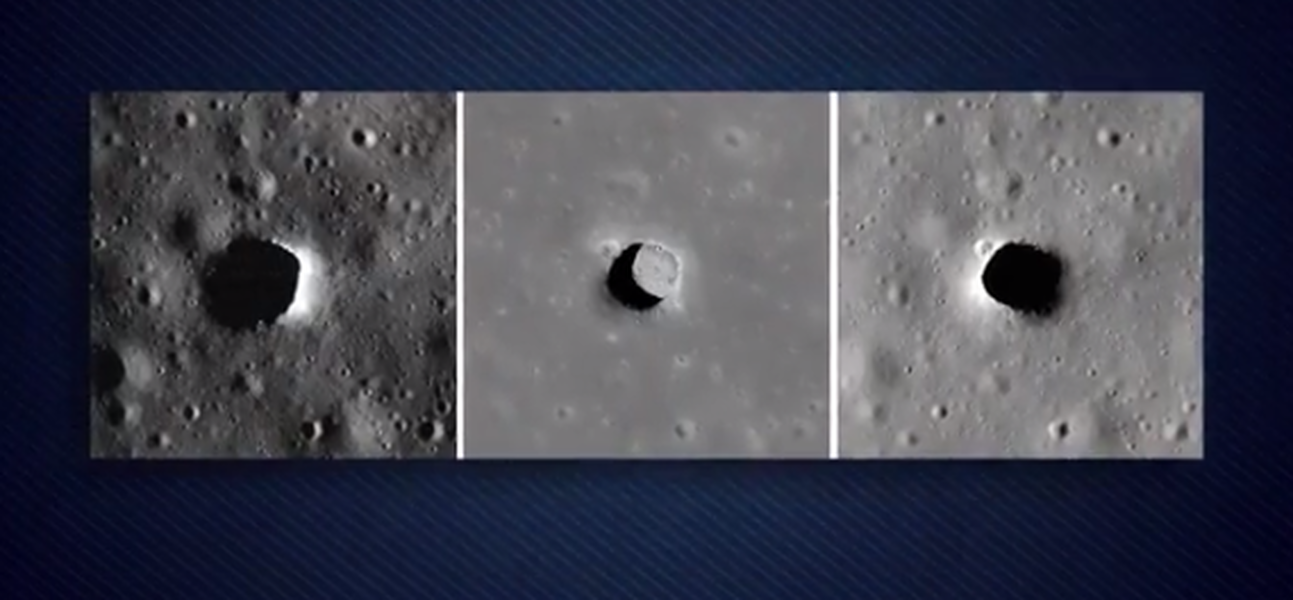NASA: The moon's underground caves could house astronauts


The moon's surface is home to a surprising number of "lunar pits" — and those pits may one day be home to astronauts.
NASA released a statement Thursday that the moon has as many as 200 lunar pits, and it hopes those pits will be able to shelter astronauts.
Since the pits aren't formed by asteroid or meteor impact, they're not technically craters, Vice explains. The pits are likely formed from parts of the moon collapsing over caves, widening underground to form larger, underground caves. The original caves, NASA says, were likely formed by ancient lava streams hollowing out the moon's underground channels.
The Week
Escape your echo chamber. Get the facts behind the news, plus analysis from multiple perspectives.

Sign up for The Week's Free Newsletters
From our morning news briefing to a weekly Good News Newsletter, get the best of The Week delivered directly to your inbox.
From our morning news briefing to a weekly Good News Newsletter, get the best of The Week delivered directly to your inbox.
"Pits would be useful in a support role for human activity on the lunar surface," Robert Wagner, an Arizona State University researcher and one of the scientists who discovered the moon's holes, said in a statement. "A habitat placed in a pit — ideally several dozen meters back under an overhang — would provide a very safe location for astronauts: no radiation, no micrometeorites, possibly very little dust, and no wild day-night temperature swings."
The pits, discovered by NASA's Lunar Reconnaissance Orbiter, range in diameter from five meters to more than 900 meters. According to Wagner, the next step is to lower probes into the pits, since pits "cannot be explored very well from orbit." Once scientists have a better sense of what's inside the pits, they can take the next step toward setting up underground lunar bases.
Check out more about the lunar pits in NASA's video below. --Meghan DeMaria
A free daily email with the biggest news stories of the day – and the best features from TheWeek.com
Meghan DeMaria is a staff writer at TheWeek.com. She has previously worked for USA Today and Marie Claire.
-
 Blue Origin launches Mars probes in NASA debut
Blue Origin launches Mars probes in NASA debutSpeed Read The New Glenn rocket is carrying small twin spacecraft toward Mars as part of NASA’s Escapade mission
-
 Dinosaurs were thriving before asteroid, study finds
Dinosaurs were thriving before asteroid, study findsSpeed Read The dinosaurs would not have gone extinct if not for the asteroid
-
 SpaceX breaks Starship losing streak in 10th test
SpaceX breaks Starship losing streak in 10th testspeed read The Starship rocket's test flight was largely successful, deploying eight dummy satellites during its hour in space
-
 Rabbits with 'horns' sighted across Colorado
Rabbits with 'horns' sighted across Coloradospeed read These creatures are infected with the 'mostly harmless' Shope papilloma virus
-
 Lithium shows promise in Alzheimer's study
Lithium shows promise in Alzheimer's studySpeed Read Potential new treatments could use small amounts of the common metal
-
 Scientists discover cause of massive sea star die-off
Scientists discover cause of massive sea star die-offSpeed Read A bacteria related to cholera has been found responsible for the deaths of more than 5 billion sea stars
-
 'Thriving' ecosystem found 30,000 feet undersea
'Thriving' ecosystem found 30,000 feet underseaSpeed Read Researchers discovered communities of creatures living in frigid, pitch-black waters under high pressure
-
 New York plans first nuclear plant in 36 years
New York plans first nuclear plant in 36 yearsSpeed Read The plant, to be constructed somewhere in upstate New York, will produce enough energy to power a million homes



